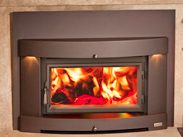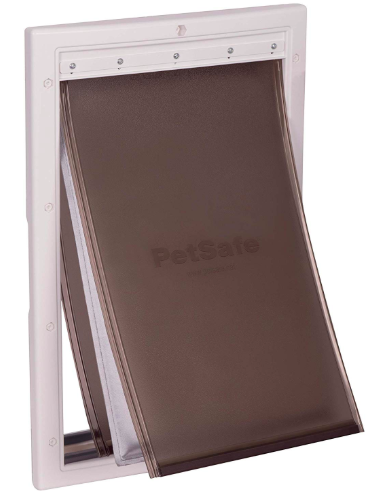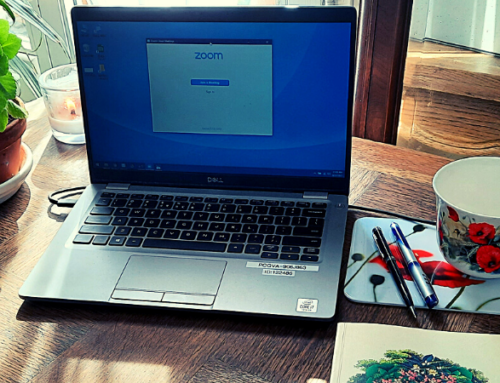The temperatures here are below zero at night, so last week we focused on easy ways as how to save energy at home. Some months ago, we already examined simple steps to save electricity. This time, we concentrated on everything related to heating and explored how we could be more eco-friendly in this area of our lives. I thought it would be a simple straightforward week, yet things did not go as smoothly as I had expected.
We tried out these 7 steps:
1) Reducing our water heater temperature
According to Energy.gov, lowering the water heater thermostat can lead to energy savings of 4-22%. I expected that this would be an easy change—like with the fridge, where it took me only a few seconds to make an important difference. Yet things did not turn out so well. I enthusiastically went downstairs to the cellar, where our water heater is, only to find that it does not have a visible thermostat at all! Perplexed, I returned to my computer and found this video by Ooreka.fr. With renewed optimism, I went back downstairs and found myself facing this:

I was still not sure what to turn in order to lower the temperature… Finally, I thus decided to leave this “privilege” to the plumber who will come by soon. I hope your water heaters have a bit clearer thermostats than ours 🙂
On top of everything else, I forgot after my trials to connect the heater to the power supply. I also did not explain all my efforts with water heater to my husband. In the middle of bathing our kids, my husband was thus surprised to discover that there was no more warm water! And apparently little Rick finished the bath with blue lips. Fortunately, he did not fall sick. Yet all the situation with its unexpected results made me think of our initial efforts to have greener commute. Green adventures 🙂
2) Switching to timed automatic thermostats
Caroline Davis outlines this as one of her 5 eco-friendly tips for keeping your house warm and one of the ways as how to save energy at home. On the ground floor, our house is heated mainly by a floor heating system. Yet its thermostats seem to be at least 20 years old, as presented in one of the featured photos of this blog post.
We thus bought and decided to instal a new one that could be programmed:

More concretely, Caroline Davis writes that “A programmable thermostat allows you to enter two temperatures, a high temperature and a lower one. When the temperature of your house falls below the lowest temperature you’ve entered, the house will heat to the maximum temperature and then turn off again.
This is a great way to make sure your house never gets too cold, while still saving energy as it keeps your furnace from running continuously.”
In general, I have been lost regarding what to do with our radiant floor heating system. Scott Gibson dedicates a whole article to discussing “whether thermostat setbacks make radiant systems work too hard in the morning.” I decided that I will programme it so that at night, and during the day when the sun mostly heats my house, it is set 2 degrees lower than when our family uses the space. Let’s see how this works. I have to admit that I am still a bit confused about this whole issue.
3) Turning down the thermostats by 1 degree and layering up
Upstairs, where our bedrooms are, we do not have radiant system. Instead, we have radiators that are equipped with thermostats. Until some days ago, for instance, we set the temperature in the kids’ room to 18 degrees at night. During the day I usually set it to 15 degrees. For a week now, we have tried 17 degrees at night and 14 degrees during the day. We did the same with other rooms.
When one of us feels cold, the policy will be to “layer up” and “bundle up in sweaters and scarves,” as suggested by Camille Wejnert-Depue in her blog post on eco-friendly ways to be during winter. When it comes to night sleep, my boys are already a step ahead. Since they were babies, they have refused to sleep under any cover for more than 5 minutes. They are thus used to wearing light sweaters over their pyjamas at night.
4) Looking into installing the insert for your fireplace
Having a good well-fitted damper in the fireplace that is closed when there is no fire is an important measure as how to save energy, according to Caroline Davis. We have an open fireplace that does not have a good damper. My husband had already sealed the airway that went up the chimney, and we also had another layer to protect the heat from escaping. However, we wanted to take a step further this year and turn our fireplace into an important source of energy. Instead of letting it remain a liability from an energy point of view. We have been looking into installing a fireplace insert. Chimneyspecialistsinc.com argue that while an old open fireplace is only about 5% to 10% efficient, the “efficiency of fireplace inserts can be as much as 80%.” One of the insert they present is pictured below:

5) Closing shutters for heat conservation in winter
When foreigners visit my home country, Estonia, they are often astonished to find out that we do not really have or use window shutters. In summer, we have barely any dark hours, and many visitors struggle to get to sleep. Winters are usually cold, and it would make sense to have shutters to preserve energy.
I am lucky that we have shutters in our house now. However, since I did not grow up using them, I never closed them until last week. Inspired by Alternative Energy Geek, who devoted a full blog post to discussing the energy-saving nature of window shutters, I decided to change this habit. But I quickly found out that some of my shutters did not close well —they were more decorative. Only my oldest son was lucky, and we can use this technique for his room. Better that, than nothing!
6) Leaving your oven door open after baking in winter
When I read about the suggestion to leave oven door open after baking, it brought me back to Turkmenistan and the Caucasus. In these regions I often saw families using their open gas-powered oven as a less expensive way to heat their homes! We do not have a very powerful oven at home, but in the future, I will try to take more advantage of the heat that it produces. It is just important that I look out for my two-year-old’s safety while using this method, since he is so curious 🙂
7) How to save energy at home: draught-proof your property
Last week I also focused on looking for insulation gaps. It was time to seal some leaks, also recommended by Camille Wejnert-Depue and Anja in their blog posts. I decided to tackle two types of leaks in particular, where I felt that our house lost a lot of heat. First was the cat pet door that we inherited from previous owners. We do not have a cat, and our dog Fleur is too big to use it. So this non-insulated cat door was not good for anything. After some research, we decided to replace it with a PetSafe medium-size insulated dog door:

We will not only save energy, but Fleur can also go out whenever she pleases! Now she can only peek out as you can see on one of the featured photos of this blog post 🙂
The other aspect we decided to tackle was draught-proofing our external doors, which were not well-insulated. We invested in these VIDEN strips:

In addition to keeping cold air away, we should also not get any unwanted visitors 😊









Leave A Comment